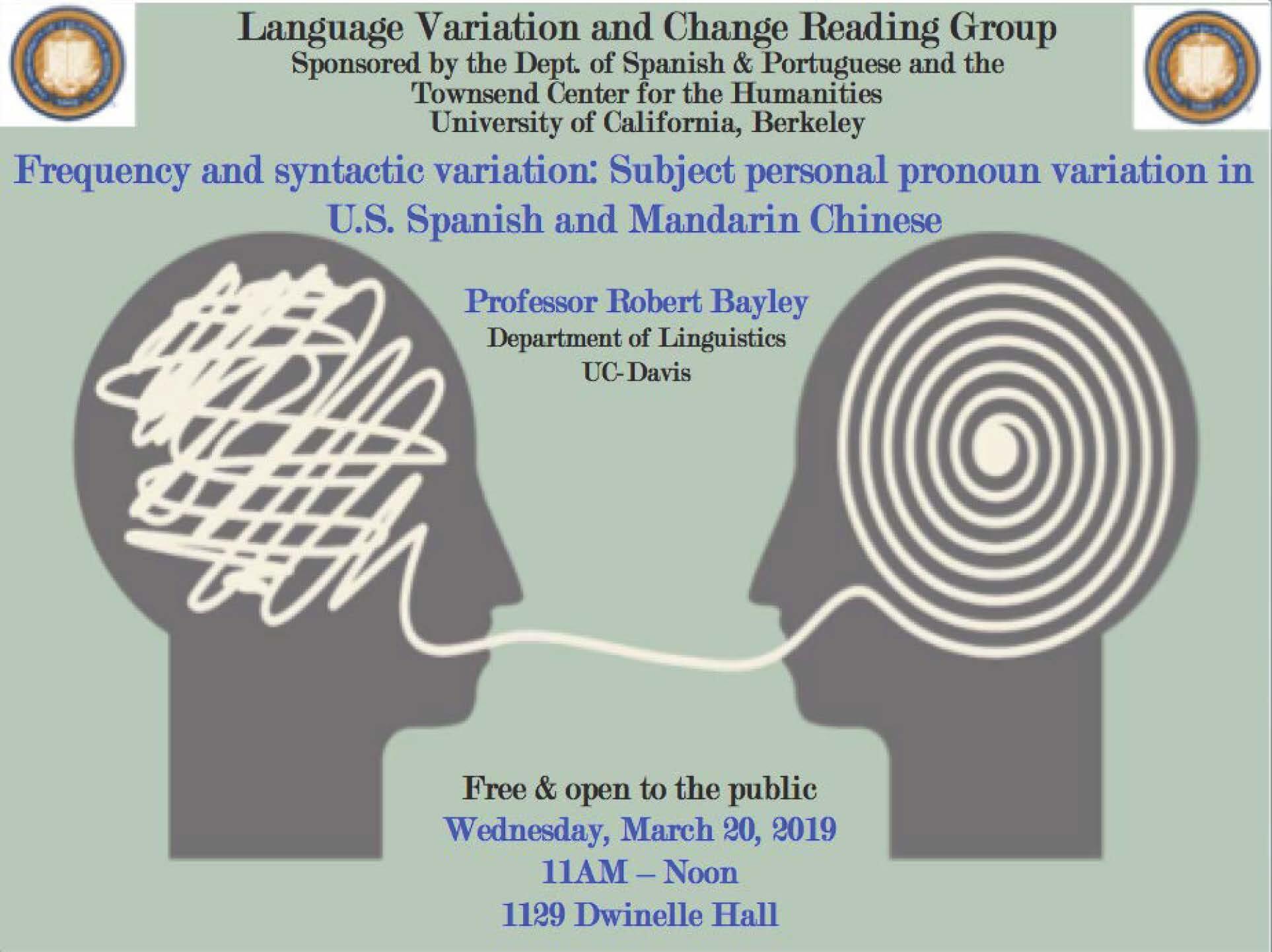
With the rise of exemplar theory (Bybee 2010), the role of lexical frequency in language variation and change has been a focus of considerable study, particularly in phonology (e.g. Bybee 2002; Jurafsky et al. 2001; Labov forthcoming; Walker 2012). Results, however, have been mixed, with some studies showing strong frequency effects and others showing no such effects.
Recently Erker and Guy (2012) extended the analysis of frequency effects to morphosyntactic variation. Based on data from 12 Dominican and Mexican speakers from Otheyguy and Zentella’s (2012) New York City Spanish corpus, they examined the role of frequency in variation between null and overt subject personal pronouns (SPP), among the most widely studied variables in Spanish sociolinguistics. Erker and Guy’s results suggest that frequency either activates or amplifies the effects of other constraints such as co-reference with subject of the preceding verb and person and number. In this talk I examine the role of frequency on SPP variation in Spanish and Mandarin Chinese, based on data collected in northern California, south Texas, and Harbin, China.
Multivariate analyses of more than 8,600 tokens of Spanish and 6,600 tokens of Mandarin Chinese suggest that frequency has only a small effect on speakers’ choices between overt and null subject pronouns, much less than switch reference or person or number. The results presented in this study, as well as results presented in Martínez-Sanz and Van Herk (2012), suggest that the role of frequency, at least in this area of the grammar, has been considerably exaggerated and that well-established linguistic factors provide a better explanation for SPP variation than frequency.
Robert Bayley is professor of linguistics, editor of the Publications of the American Dialect Society, and an associate member of the Centre for Research on Language Contact at York University in Toronto. He teaches graduate and undergraduate courses in sociolinguistics, second language acquisition, and general linguistics. His research focuses on language variation and language socialization, especially in bilingual and second language populations. Professor Bayley is the author of more than 100 publications, including 14 co-authored and co-edited volumes and articles in major journals such as Language Variation and Change and the Journal of Sociolinguistics. Currently he is investigating the role of frequency in language variation and change and and conducting research on the acquisition of sociolinguistic competence by second language learners.
